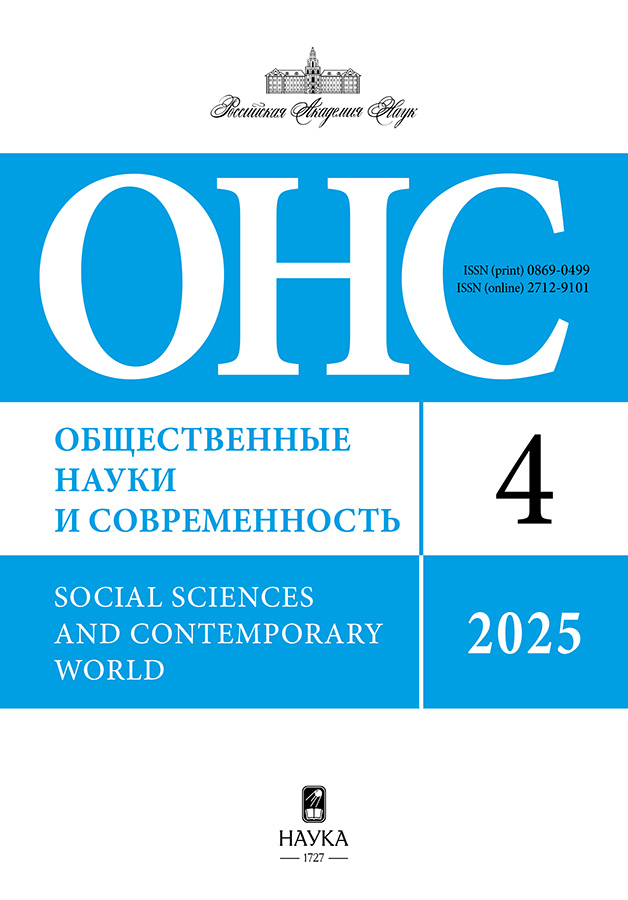The European Union’s Approach to Climate Migration
- 作者: Potemkina O.Y.1
-
隶属关系:
- Institute of Europe of the Russian Academy of Sciences
- 期: 编号 4 (2025)
- 页面: 22-33
- 栏目: IN EURASIA
- URL: https://consilium.orscience.ru/0869-0499/article/view/692740
- DOI: https://doi.org/10.31857/S0869049925040021
- ID: 692740
如何引用文章
详细
The problem of climate migration and the European Union’s approach to its solution is addressed. The analysis of the EU legal and policy documents shows that the EU recognizes the relationship between human mobility and climate change, but does not propose specific measures to protect the rights of climate migrants and refugees. From this angle, the Green Deal and the reform of asylum policy are considered. The possibilities of amending legislation within the framework of the new Pact on Migration and Asylum to recognize the rights of climate refugees are analyzed. The conclusion is that in the context of growing anti-migrant sentiments and the popularity of far-right parties, the EU prefers to shift responsibility for regulating migration flows to source countries rather than expand the grounds for asylum seekers to obtain status of climate refugee.
作者简介
O. Potemkina
Institute of Europe of the Russian Academy of Sciences
编辑信件的主要联系方式.
Email: olga_potemkina@mail.ru
Moscow, Russia
参考
- Войников В.В. (2024) Реформа общеевропейской системы предоставления убежищ в контексте реализации принципа солидарности ЕС // Полис. Политические исследования. № 1. С. 149–162. https://doi.org/10.17976/jpps/2024.01.11
- Vojnikov V. (2024) The Reform of the Common European Asylum System in the Context of the Implementation the EU Principle of Solidarity. Polis. Political studies. no 1, pp. 149–162. https://doi.org/10.17976/jpps/2024.01.11 (In Russ.)
- Леденева В. Ю. (2021) Климатическая миграция: тенденции и прогнозы // Известия Юго-Западного государственного университета. Серия: Экономика. Социология. Менеджмент. № 6. С. 233–242. https://doi.org/10.21869/2223-1552-2021-11-6-233-242
- Ledeneva V. (2021) Climate Migration: Trends and Forecasts. Proceedings of the Southwest State University. Series: Economy. Sociology. Management. no. 6, pp. 233–242. https://doi.org/10.21869/2223-1552-2021-11-6-233-242 (In Russ.)
- Лукьянец А. С. (2020) Климатическая миграция в условиях пандемии Covid-19 // Научное обозрение. Серия 1: Экономика и Право. № 3. С. 22–33. https://doi.org/10.26653/2076-4650-2020-3-02
- Lukyanets A. (2020) Climate Migration in a Pandemic COVID-19. Scientific review. Series 1. Economics and Law. nо. 3, pp. 22–33. https://doi.org/10.26653/2076-4650-2020-3-02 (In Russ.)
- Alverio G.N., Sowers J., Weinthal E. (2024) Climate change, conflict, and urban migration. Environment and Security. vol. 2. Issue 1. Pp. 1–12.
- Gemenne F. (2011) How They Became the Human Face of Climate Change. Research and Policy Interactions in the Birth of the ‘Environmental Migration’ Concept. In: Migration and Climate Change. Eds.: Piguet E., Pécoud A., De Guchteneire P. Cambridge: Cambridge University press. Pp. 225–260.
- Gonzalez C.G. (2019) Climate Justice and Climate Displacement: Evaluating the Emerging Legal and Policy Responses. Wisconsin International Law Journal. Vol. 36, no. 2, pp. 36–6396.
- Haas H. (2023) How Migration Really Works. The Facts about the Most Divisive Issue in Politics. NY: Basic books. 464 p.
- Keckhut N. (2024) Climate Change and Migration. The Development of a European Legal Approach between International Protection and Human Rights. Political science. 230 p. (https://dumas.ccsd.cnrs.fr/dumas-04711173v1/file/Keckhut%20Thesis%20-%20Complete%20%28V1.2%29.pdf).
- Kulin J., Johansson Sevä I., Dunlap R. E. (2021) Nationalist Ideology, Rightwing Populism and Public Views about Climate Change in Europe. Environmental Politics. Vol. 30. Issue 7. Pp. 1111–1134.
- Mayrhofer M., Ammer M. (2022) Climate Mobility to Europe. The Case of Disaster Displacement in Austrian Asylum Procedures. Frontiers in Climate. Issue 4. Pp. 1–19.
- Moawad D. (2024) Does Environmental Change Affect Migration Especially into the EU? Social Sciences. Vol. 13. no. 1. Pp. 1–24.
- Mugambiwa S., Sibanda P. (2025) Climate Change, Migration, and Displacement: Advancing a Risk-informed Approach for Sustainable Solutions. International Journal of Population Studies. 5165. (https://accscience.com/journal/IJPS/articles/online_first/4707).
- Schraven B. (2023) Inclusion of Migration and Migrants in Climate-resilient Development Pathways in the Context of the European Green Deal. Geneva: International Organization for Migration (IOM) pub. 41 p.
- Scissa C. (2022) The Climate Changes. Should EU Migration Law Change as Well? Insights from Italy. European Journal of Legal Studies. Issue 14(1). Pp. 5–23.
- Scissa C., Martin S.F. (2024) Migration in the Context of Climate and Environmental Changes within Central Asia and to the European Union and the Russian Federation. Geneva: International Organization for Migration (IOM) pub. 104 p.
- Scissa C. (2023) The Principle of Non-refoulement and Environmental Migration. Diritto, Immigrazione e Cittadinanza. Fascicolo. no 3. Pp. 179–212.
- Scodanibbio A. (2024) Climate Justice and Human Mobility. Egmont Policy Brief 347 (https://www.egmontinstitute.be/app/uploads/2024/06/Alicia-Scodanibbio_Policy_Brief_347.pdf?type=pdf).
- Sumudu A.A. (2018) A New Category of Refugees: Beyond the Legal Impasse? In: Climate Refugees: Beyond the Legal Impasse? Eds.: Behrman S., Kent A. London: Routledge. Pp. 34–41.
补充文件









